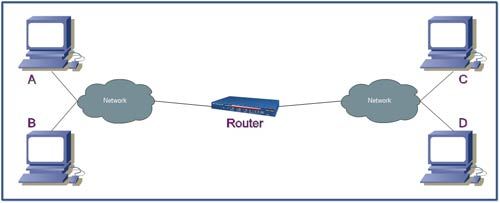Routing refers to the process of selecting the shortest and the most reliable path intelligently over which to send data to its ultimate destination. IP routing protocol makes the distinction between hosts and gateways. A host is the end system to which data is ultimately deliverable. An IP gateway, on the other hand, is the router that accomplishes the act of routing data between two networks. A router can be a specialized device supporting multiple interfaces connected to a different network or a computer multiple interfaces (commonly called a multihomed host) with routing services running in that computer.
 By OSI norms and standards, a gateway is not only a router but also a connectivity device that provides translation services between two completely hybrid networks. For example, a gateway (not a router)is needed to connect ‘a TCP/IP network to an AppleTalk network.
By OSI norms and standards, a gateway is not only a router but also a connectivity device that provides translation services between two completely hybrid networks. For example, a gateway (not a router)is needed to connect ‘a TCP/IP network to an AppleTalk network.
It is important to know that both hosts and IP routers (gateway) perform routing functions and therefore, compatible implementations of the IP protocol are necessary at both ends. In other words, data grams are submitted either to the host that shares the same physical network with the originating host or to a default gateway for further routing across the network. As such, IP on a host is responsible for routing packets that originate on this host only, fulfilling local needs for routing. A gateway, on the other hand, is responsible for routing all traffic regardless of its originator (as long as the TTL field is valid).
A default gateway is a router that a host is configured to trust for routing traffic to remote systems across the network. However, the trusted router must be attached to the same network as the trusting host. A router on a remote network cannot be used for providing the functionality of the default gateway,
 Dinesh Thakur holds an B.C.A, MCDBA, MCSD certifications. Dinesh authors the hugely popular
Dinesh Thakur holds an B.C.A, MCDBA, MCSD certifications. Dinesh authors the hugely popular